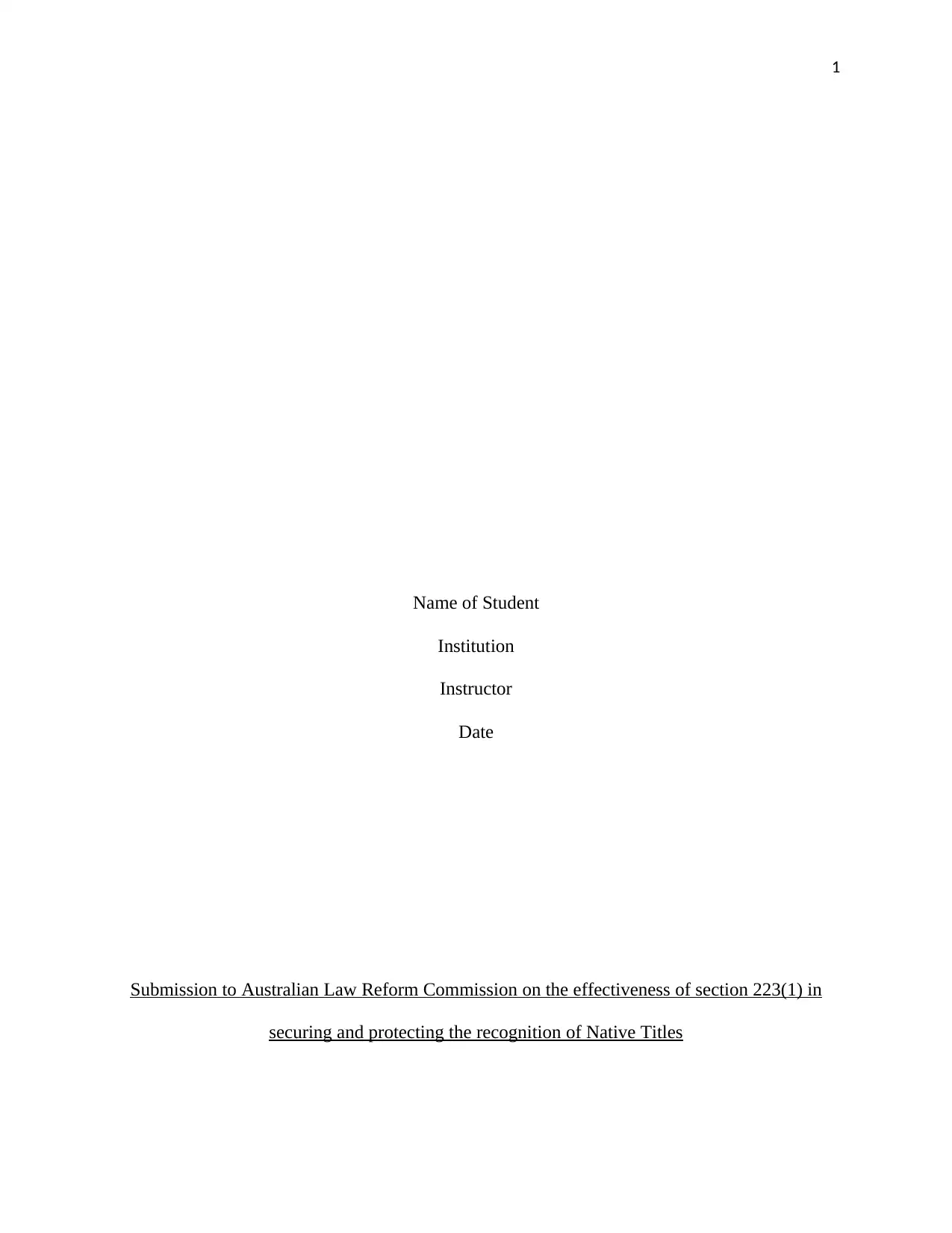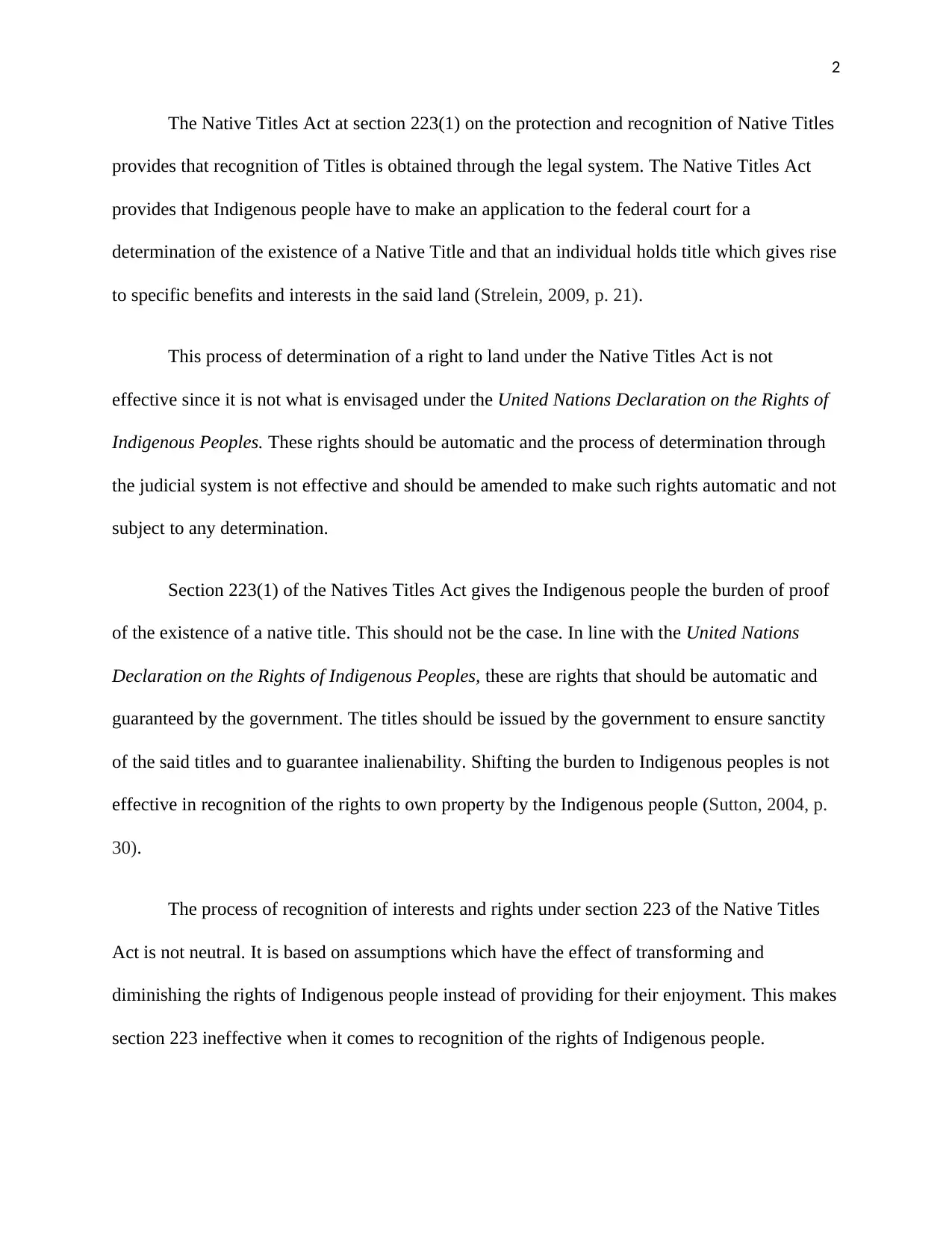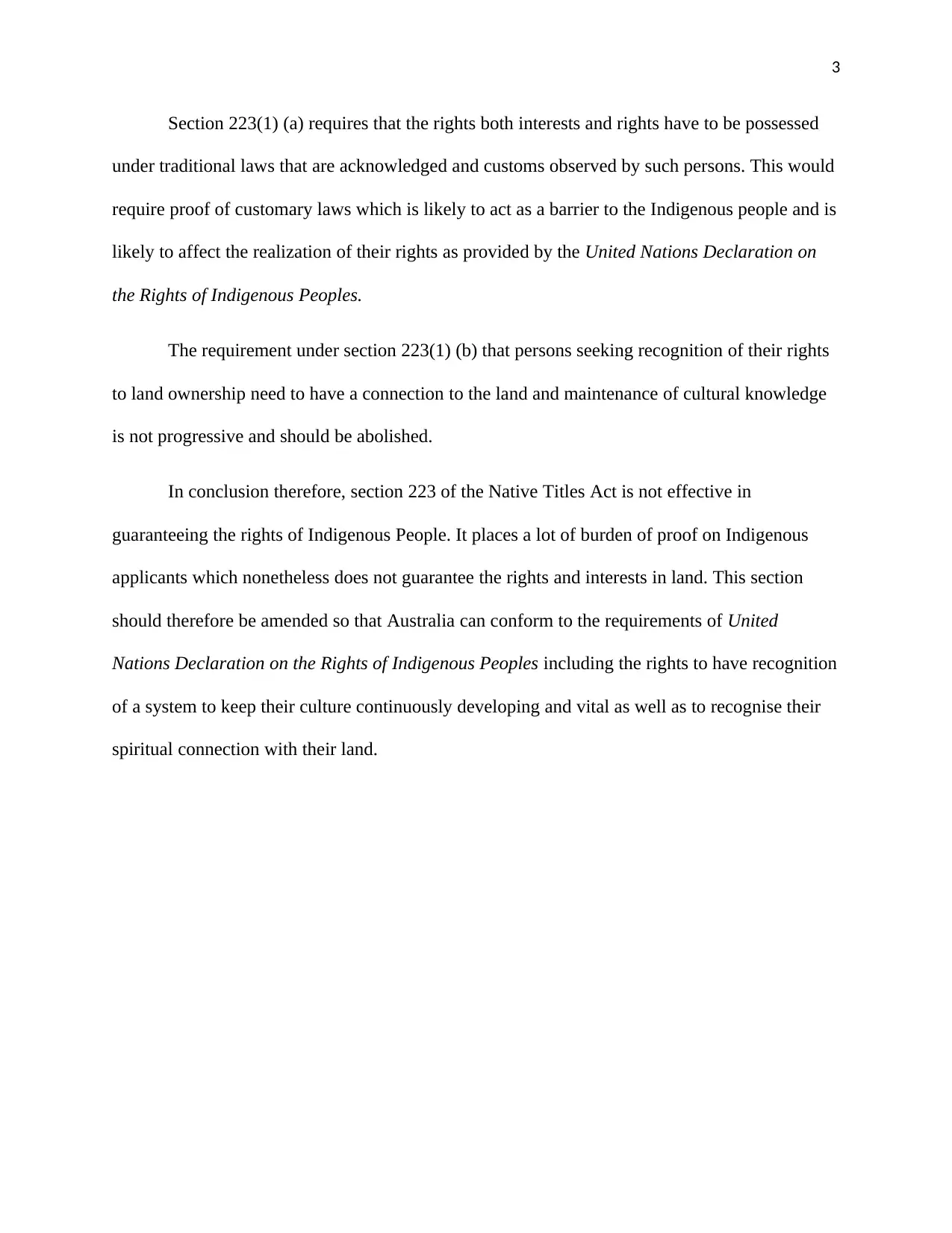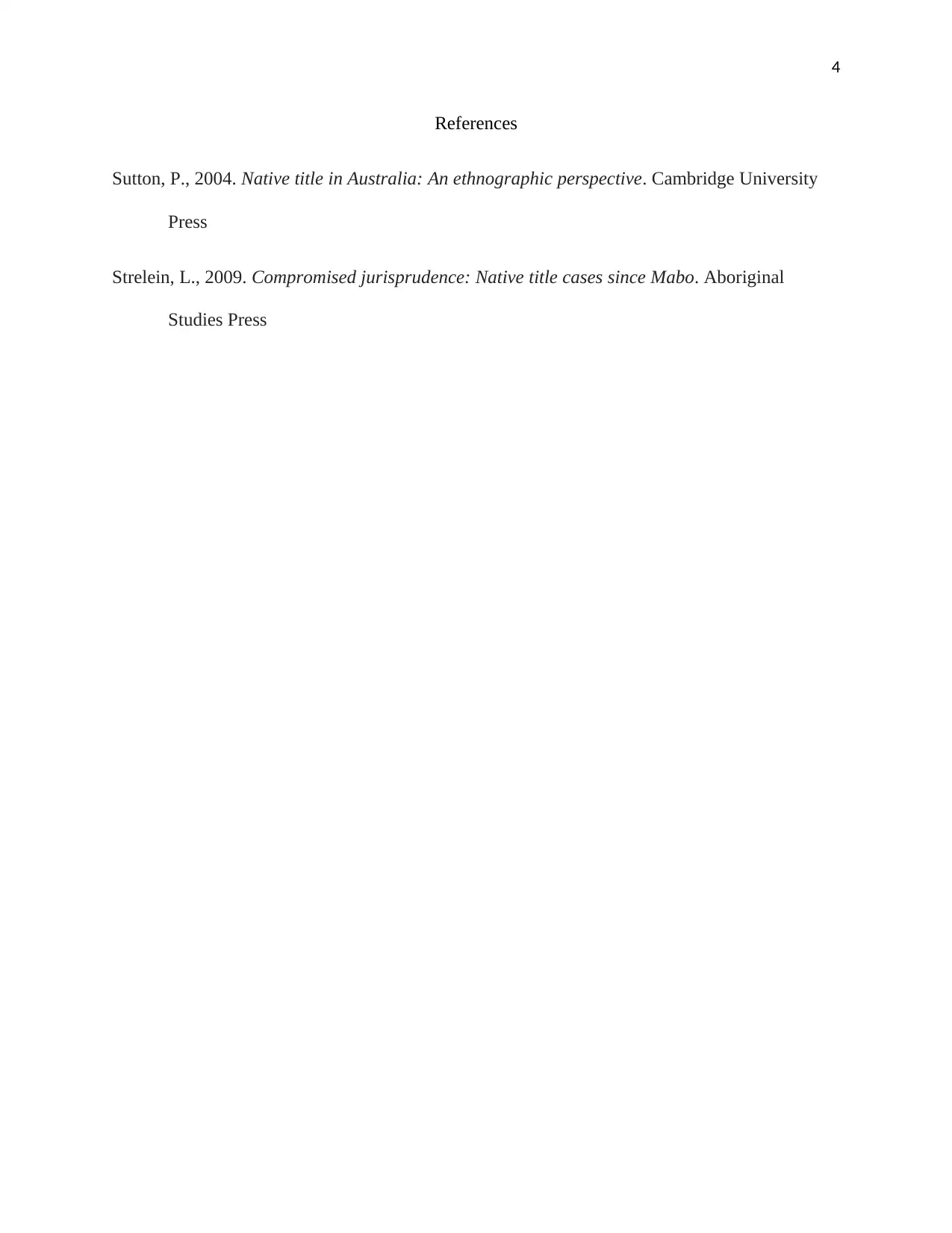Effectiveness of Section 223(1) in Securing and Protecting Recognition of Native Titles
VerifiedAdded on 2023/06/03
|4
|612
|396
AI Summary
This article discusses the effectiveness of section 223(1) in securing and protecting the recognition of Native Titles in Australia. It argues that the burden of proof should not be on Indigenous people and that the process of determination should be automatic. The article also highlights the barriers that Indigenous people face in proving their customary laws and connection to the land. It concludes that section 223 should be amended to conform to the United Nations Declaration on the Rights of Indigenous Peoples.
Contribute Materials
Your contribution can guide someone’s learning journey. Share your
documents today.
1 out of 4










![[object Object]](/_next/static/media/star-bottom.7253800d.svg)